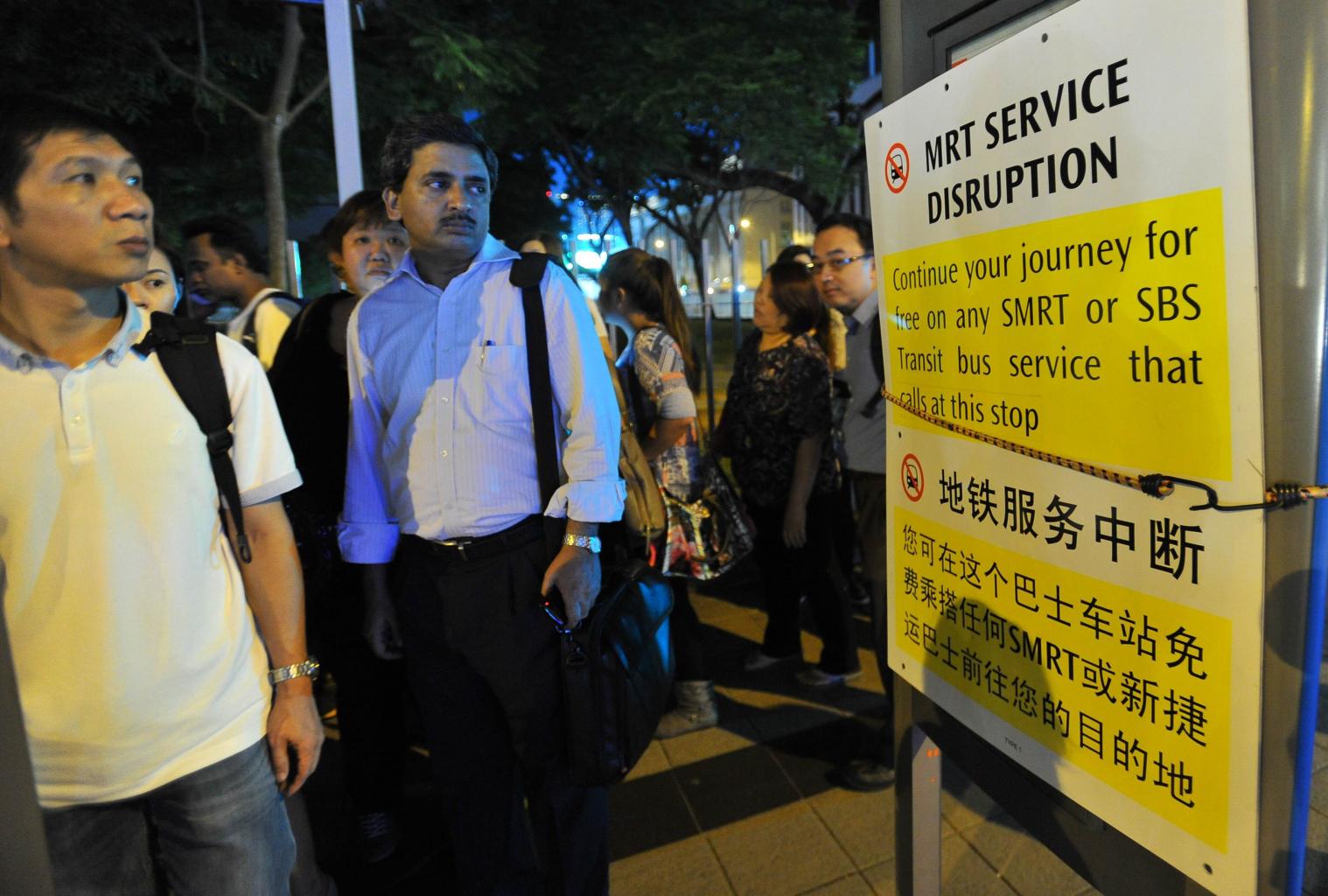Insulation of third rail was likely cause of July 7 MRT disruption: SMRT
Sign up now: Get ST's newsletters delivered to your inbox

Information signs outside City Hall MRT station during breakdown of MRT service along the North-South line and East-West line on July 07 2015.
ST PHOTO: LIM YAOHUI FOR THE STRAITS TIMES
Follow topic:
SINGAPORE - The insulation of the MRT system's third rail, which supplies power to trains, is the likely cause of last Tuesday's massive breakdown, SMRT said in a media release on Thursday.
The July 7 breakdown disrupted service on the entire North-South, East-West network for more than two hours during the evening rush hour. SMRT's investigations have narrowed down the likely cause to this insulation, which is part of the trackside infrastructure that protects the power cables supplying the third rail.
"Intensive, round-the-clock investigations and re-enactments of the incident point to the likelihood that the insulation of the third rail could have affected the supply of traction power," said SMRT.
This, in turn, led to the tripping of the Touch Voltage Protection Relay along multiple stretches of the lines. The relays are a safety measure, meant to protect commuters from unsafe "touch voltage".
SMRT's investigations since the incident covered 200km of train tracks, all 67 power substation supporting the NSEW network, all 115 trains used on July 7, and another 26 trains at depots. Re-enactments last weekend have ruled out two earlier suspected causes: two track voltage balancing cables, and a relay in a power substation.
Engineers are now focusing their investigations on the insulation of the third rail as the possible cause.
As part of SMRT's pledge for an independent consultation of the incident, the operator has approached international rail operators such as London Underground for their views on SMRT's preliminary assessment.
SMRT has also engaged retired staff to help with investigation and rectification efforts. This includes two staff who were part of the Mass Rapid Transit Corporation team involved in the development of the power network in the early years.
Work to make the power network more robust has also been fast-tracked following the incident. Trackside components are being renewed and SMRT will work with the Land Transport Authority to segment, where possible, the network of cables that supply power to the two lines.
This will make the rail network more resilient, as a power fault on one part of the line will then be unlikely to disrupt travel on other parts or the other line - which is what happened on July 7.

